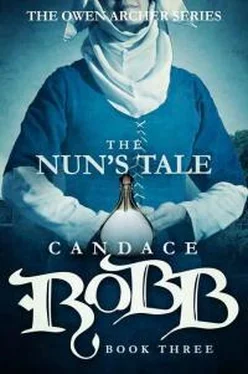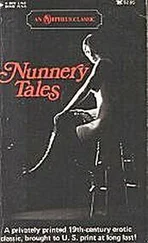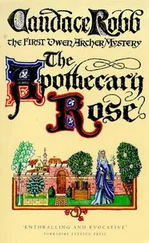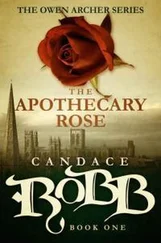But Pedro had no intention of quietly accepting defeat; he turned to England, seeking the help of the Black Prince in winning back his crown, offering him lavish payment. The English were highly motivated to keep the powerful Castilian navy as their ally.
The Black Prince readied himself in the Aquitaine, and John of Gaunt, Duke of Lancaster, began gathering an army of soldiers and archers to support the venture. In the novel, Owen works with his old comrades Lief and Gaspare to develop an efficient method for training the archers Gaunt needed.
The extent of Chaucer’s espionage work is unknown; in the early 1360s he studied law and finance at the Inns of Court and perhaps also served for a time in Lionel’s army in Ireland. By 1367 he was Esquire of the Royal Household; late in that year the death of Blanche of Lancaster inspired Chaucer’s first great poem, The Book of the Duchess. For Chaucer’s mission to Navarre, I use Donald R. Howard’s interpretation of a safe conduct preserved in the archives in Pamplona, allowing the poet to “enter, stay, move about, turn around and go back’. [2] Chaucer: His Life, His Works, His World (New York: Dutton, 1987), p. 115.
Whence came Joanna? In The History of Clementhorpe Nunnery [3] R. B. Dobson and Sara Donaghey, York Archaeological Trust for Excavation and Research, 1984, p. 15.
is the following item:
In 1318 there is mention of [an] apostate, Joanna of Leeds. Archbishop Melton ordered the dean of Beverley to return the nun to her convent… Apparently Joanna had defected from her religious order and left the nunnery. However, in order to make her defection credible, she had fabricated her death at Beverley and, with the aid of accomplices, even staged her own funeral there. The archbishop was prepared to take a lenient view of these excesses. He directed the dean of Beverley to warn Joanna of the nature of her sins and, if she recanted them within eight days, to allow her to return to Clementhorpe to undergo a penance. Melton further urged the dean to undertake a thorough investigation of the case, and to discover the names of Joanna’s accomplices so that he might then take suitable action.
The story intrigued me. Was Joanna discovered, betrayed, or did she request to return to St Clement’s Nunnery? If it was her choice, why make such an about-face? She had gone to great lengths to escape and make it permanent.
I moved the incident to 1365–66, putting it in Archbishop Thoresby’s time, which provided me with a serendipitous relationship – Thoresby’s nephew, Richard de Ravenser, was a canon of Beverley at this time, as was William of Wykeham. Nicholas de Louth is also a real person. Because I moved Joanna’s story in time, none of the participants in the book had anything to do with the real story of Joanna of Leeds.
From the first, I envisioned Joanna to be an ambiguous character such as Mary Magdalen. As Susan Haskins describes in Mary Magdalen: Myth and Metaphor , [4] Mary Magdalen: Myth and Metaphor (New York: Harcourt Brace and Company, 1994).
the saint had evolved from Christ’s disciple and friend to a penitent prostitute who endured a long penance as a hermit in the desert: in fact, by the fourteenth century the biblical references to Mary Magdalen, Mary of Martha and Mary, and the prostitute who washes Christ’s feet had been combined into one symbol, and the fifth-century Mary of Egypt was also folded into the mixture. And thus the Magdalen medal that Joanna loses in the first scene, a gift from the brother she adores.
The medal is a talisman, a good-luck charm. It serves as a reminder that a character such as Joanna cannot be analysed in modern terms; her belief in the protective power of the medal is part of her faith. So too is Joanna’s remorse about stealing a portion of the Virgin’s milk from the nunnery. St Clement’s did boast such a relic, a popular one in a time of great devotion to the Blessed Virgin Mary, and people believed in the power of such relics, going on pilgrimages to receive grace through homage to them.
In the book, Joanna refuses to discard the belief that her mantle is a gift from the Blessed Virgin, even when Edmund, who had originally told her it was Our Lady’s mantle, admits to her that it is not. Joanna truly believes that Our Lady appeared to her and helped her return to St Clement’s. The mantle also causes a stir at the nunnery – and when the cook believes the mantle has cured her skin ailment, Dame Isobel sees trouble ahead in trying to silence the rumour of a miracle. Indeed, she wonders whether she actually should silence it – such a relic could attract more pilgrims to fill the nunnery’s coffers. Consider what P. J. Geary has to say about determining the authenticity of relics: “The most effective means available was in reality a very pragmatic one: if the relics performed as relics – that is to say, if they worked miracles, inspired the faithful, and increased the prestige of the community in which they were placed – they had to be genuine.’ [5] Furta Sacra: Thefts of Relics in the Central Middle Ages (Princeton: Princeton University Press, 1980) p. 54.
Joanna’s madness does not lie in her beliefs.
Why did Joanna choose the convent? As the daughter of a wealthy merchant and a high-born mother, her most acceptable roles would be those of either wife or nun. In late fourteenth-century England, women were making inroads into middle-class occupations in the cities, but, then as now, not everyone can succeed in business. Joanna is not an entrepreneur like Bess Merchet, nor has she been trained in a profession like Lucie Wilton. She considers the nunnery a safe haven until she comes up with a better plan. The life of a nun was seen as a respectable career; not all who took the veil had religious vocations, and convent life could be quite comfortable. The number of documents reiterating the rule of enclosure (that a nun’s place was in the cloister, not outside in the world) and admonishing sisters for wearing finery and keeping pets suggest less rigid establishments than we might imagine. And although St Clement’s was considered a small, poor nunnery, the description is relative; it could boast neither the size nor the wealth of Shaftesbury or Barking, but it was the third wealthiest of the Yorkshire nunneries and held considerably property. Joanna might have lived out her life in quiet contentment at St Clement’s – and perhaps the real Joanna of Leeds did.
Desmond Seward, The Hundred Years War: the English in France, 1337–1453 (New York: Atheneum, 1978), pp. 105–106.
Chaucer: His Life, His Works, His World (New York: Dutton, 1987), p. 115.
R. B. Dobson and Sara Donaghey, York Archaeological Trust for Excavation and Research, 1984, p. 15.
Mary Magdalen: Myth and Metaphor (New York: Harcourt Brace and Company, 1994).
Furta Sacra: Thefts of Relics in the Central Middle Ages (Princeton: Princeton University Press, 1980) p. 54.












